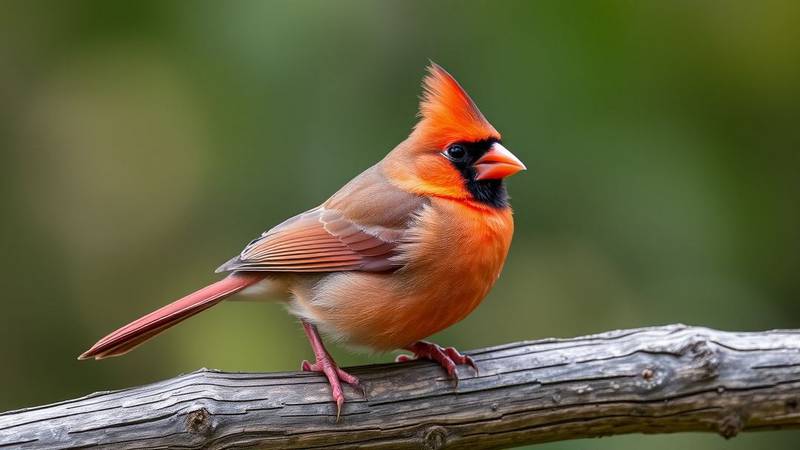Behavior: Sociable and Territorial
The Northern Cardinal is a generally sociable garden bird that forms monogamous pairs for life. It is often observed alone or in pairs, but in winter, it may join small groups to feed, especially around feeders. Both male and female share the tasks of nest building, egg incubation, and feeding the young.
Although sociable, the male can be territorial, especially during the breeding season. He defends his territory by singing and adopting threatening postures. Interestingly, he may even attack his own reflection in a window, mistaking it for a rival!
Breeding primarily occurs between March and September. The nest is built by the female, usually in a dense shrub or small tree. She lays 2 to 5 eggs which are incubated for 11 to 13 days. Young birds leave the nest after 9 to 11 days but remain fed by their parents for a few more weeks.
Habitat, Diet, and Distribution
Cardinals thrive in areas with dense shrubs and thickets for nesting, such as woodland edges, parks, and suburban gardens. They are not shy and are frequent visitors to bird feeders. Their diet consists mainly of seeds, fruits, and insects. To attract cardinals to your yard, offer sunflower seeds (especially black oil sunflower seeds) and safflower seeds in a stationary or platform feeder.
Distribution Map
The Northern Cardinal is a resident bird, meaning it stays in the same area year-round. Its range has been expanding northward in recent decades. The map below shows its current distribution.
Conservation Status
The Northern Cardinal is classified as "Least Concern" (LC) on the IUCN Red List. This classification is due to its very wide range, covering a large part of North America, and a global population that is stable or even slightly increasing.
Its ability to adapt to human-modified environments, such as suburbs, parks, and gardens, has contributed to its success. It is not considered threatened, although localized habitat destruction can still affect some populations. Conservation measures are primarily focused on maintaining the quality of its habitat.
Meaning and Spiritual Symbolism
Seeing a Northern Cardinal is often considered a special event, carrying deep messages. In many cultures, this bird is a powerful symbol:
- Messenger from a Loved One: The most widespread belief is that a cardinal is a spiritual visitor sent by a deceased loved one to remind you that their spirit is still with you, bringing love and comfort.
- Hope and Vitality: Its vivid red color standing out against a dull winter landscape represents hope, joy, and vitality amidst difficulties.
- Fidelity and Love: Cardinals are monogamous birds that form lifelong pairs, making them a symbol of devotion, fidelity, and lasting relationships.
Frequently Asked Questions (FAQ)
Where does the Northern Cardinal live?
The Northern Cardinal is a resident bird of North America. It is found in the eastern half of the United States, southeastern Canada, and extending into Mexico. It does not live in the wild in Europe or other continents.
What is the spiritual meaning of the Northern Cardinal?
The Northern Cardinal is often considered a spiritual messenger, a visitor sent by a departed loved one to bring comfort and hope. Its vivid color, especially in winter, symbolizes vitality, passion, and loyalty.
How to recognize the female Northern Cardinal?
The female is much more discreet than the male. Her plumage is mostly olive-brown, but she shares the same prominent crest, black mask, and conical reddish-orange beak as the male. She also has some hints of red on her crest, wings, and tail.
What is the conservation status of the Northern Cardinal?
The Northern Cardinal is classified as 'Least Concern' (LC) by the IUCN. Its population is numerous and stable, and its range is vast. It adapts well to human-modified environments, including gardens and parks.

